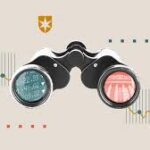
In the age of technology and digitalization, the term “blue light special” has gained traction, often evoking discussions about its effects on our health and well-being., a type of high-energy visible (HEV) light, is emitted by various sources, including the sun, LED screens, smartphones, tablets, and computers. While plays a crucial role in regulating our circadian rhythm and boosting alertness during the day, excessive exposure to it, particularly from electronic devices, has raised concerns among researchers and health professionals. This article aims to delve into the concept of the blue light special, exploring its impact on sleep, eye health, and overall wellness, while also shedding light on strategies to mitigate its adverse effects.
Table of Contents
ToggleUnderstanding Blue Light:
Blue light falls within the visible light spectrum, with wavelengths ranging from 380 to 500 nanometers. Its presence in sunlight helps regulate our internal body clock, influencing sleep-wake cycles and alertness. However, with the widespread use of digital devices emitting blue light, concerns have arisen regarding its effects on health.
Impact on Sleep:
One of the primary concerns associated with exposure is its interference with sleep patterns. The blue light emitted by screens can suppress the production of melatonin, a hormone responsible for regulating sleep. Prolonged exposure to screens, particularly before bedtime, can disrupt the body’s natural circadian rhythm, leading to difficulties falling asleep and experiencing restorative rest.
Research suggests that individuals who frequently use electronic devices before bedtime are more likely to report poor sleep quality and daytime drowsiness. Moreover, the prevalence of sleep disorders, such as insomnia and delayed sleep phase syndrome, has been linked to excessive exposure. Therefore, limiting screen time before bed and implementing digital curfews may help mitigate these adverse effects on sleep.
Eye Health Concerns:
In addition to its impact on sleep, prolonged exposure to can also pose risks to eye health. The high-energy wavelengths of blue light can penetrate the eye’s cornea and lens, reaching the retina. Over time, this exposure may contribute to digital eye strain, characterized by symptoms such as dry eyes, blurred vision, headaches, and eye fatigue.
Furthermore, studies suggest that cumulative exposure to increase the risk of age-related macular degeneration (AMD), a leading cause of vision loss among older adults. The retina’s cells may be damaged by prolonged exposure to blue light, leading to the development of AMD. While further research is needed to establish a definitive link, it underscores the importance of minimizing blue light exposure, particularly for individuals at risk of eye diseases.
Mitigating Strategies:
Given the pervasive nature in today’s digital age, adopting strategies to reduce exposure is essential for maintaining overall health and well-being. Several approaches can help mitigate the adverse effects of blue light:
- Use Blue Light Filters: Many electronic devices now offer built-in blue light filters or settings that allow users to adjust the color temperature of their screens. These filters reduce the amount of blue light emitted, especially during nighttime hours, promoting better sleep quality.
- Limit Screen Time Before Bed: Establishing a digital curfew and avoiding screen time at least an hour before bedtime can help signal to the body that it’s time to wind down. Engaging in relaxing activities such as reading a book or practicing mindfulness can promote better sleep hygiene.
- Invest in Blue Light Blocking Glasses: Specialized eyewear equipped with blue light blocking lenses can help reduce eye strain and minimize exposure to harmful blue light. These glasses are particularly beneficial for individuals who spend extended periods in front of screens.
- Take Regular Breaks: Implement the 20-20-20 rule, which involves taking a 20-second break every 20 minutes to look at something 20 feet away. This practice can alleviate eye strain and reduce the cumulative effects of blue light exposure.
- Optimize Lighting Environment: Adjusting the lighting environment in workspaces and living areas can help minimize exposure to artificial blue light. Using warmer, dimmer lighting options in the evening can signal to the body that it’s time to prepare for sleep.
Conclusion:
While blue light plays a vital role in regulating our biological processes, excessive exposure to it, particularly from electronic devices, can have detrimental effects on sleep, eye health, and overall well-being. As technology continues to permeate every aspect of our lives, adopting proactive measures to mitigate blue light exposure is crucial. By incorporating strategies such as limiting screen time, using blue light filters, and practicing good sleep hygiene, individuals can safeguard their health in an increasingly digital world. Moreover, ongoing research into the long-term effects of blue light exposure will further inform preventative measures and promote greater awareness of its implications for human health.






